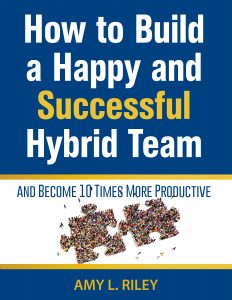Mark Stiving is my guest today and he is a pricing expert. What does pricing have to do with The Courage of a Leader? It turns out, quite a lot!
The secret to effectively pricing your products and services is the same one leaders can use to clearly define and communicate the value of their teams’ work.
Are you intrigued? I was!
About the Guest:
Mark Stiving, PhD, MBA, is a widely recognized pricing expert and marketing pro who teaches companies how to boost revenues and realize their true value. With 25+ years’ experience in price segmentation, pricing product portfolios and visionary pricing, Mark’s analytical skills provide specific direction and quantifiable results. Sought after as a trusted advisor, Mark has consulted, trained and/or coached hundreds of companies including Cisco, Procter and Gamble, Grimes Aerospace, Splunk, and Crowdstrike.
Mark uses a creative but pragmatic approach to help large businesses and entrepreneurs untangle confusion about pricing. All businesses can benefit from Mark’s value-based pricing strategies to capture their true worth, from start-ups to seasoned enterprises.
Mark is an award-winning speaker and the author of Impact Pricing: Your Blueprint for Driving Profits and his latest book Win Keep Grow: How to Price and Package to Accelerate Your Subscription Business
The best way to reach Mark is on LinkedIn https://www.linkedin.com/in/stiving/ or via email mark@impactpricing.com
About the Host:
Amy L. Riley is an internationally renowned speaker, author and consultant. She has over 2 decades of experience developing leaders at all levels. Her clients include Cisco Systems, Deloitte and Barclays.
As a trusted leadership coach and consultant, Amy has worked with hundreds of leaders one-on-one, and thousands more as part of a group, to fully step into their leadership, create amazing teams and achieve extraordinary results.
Amy’s most popular keynote speeches are:
The Courage of a Leader: The Power of a Leadership Legacy
The Courage of a Leader: Create a Competitive Advantage with Sustainable, Results-Producing Cross-System Collaboration
The Courage of a Leader: Accelerate Trust with Your Team, Customers and Community
The Courage of a Leader: How to Build a Happy and Successful Hybrid Team
Her new book is a #1 international best-seller and is entitled, The Courage of a Leader: How to Inspire, Engage and Get Extraordinary Results.
https://www.linkedin.com/in/amyshoopriley/
Resources mentioned in the episode
Made to Stick by Chip Heath and Dan Heath – https://heathbrothers.com/books/made-to-stick/
Selling Value, How to Win More Deals at Higher Prices – https://impactpricing.com/books/
The Inspire Your Team assessment (the courage assessment): https://courageofaleader.com/inspireyourteam/
Thanks for listening!
Thanks so much for listening to The Courage of a Leader podcast! If you got inspired and/or got valuable leadership techniques you can use from this episode and think that others could benefit from listening, please share using the social media buttons on this page.
Do you have questions or feedback about this episode? Leave a comment in the section below!
Subscribe to the podcast
If you would like to get automatic updates of new The Courage of a Leader podcast episodes, you can subscribe to the podcast on Apple Podcasts. You can also subscribe in your favorite podcast app.
Leave us an Apple Podcasts review
Ratings and reviews from our listeners are extremely valuable to us and greatly appreciated. They help our podcast rank higher on Apple Podcasts, which helps us ignite The Courage of a Leader in more leaders! Please take a minute and leave an honest review on Apple Podcasts.
Teaser for next episode
Tune in next for The Profit Rainmaker: How to Execute Exceptionally Well on True Priorities with my guest, John Lanier.
Transcript
Mark Stiving is my guest today and he is a pricing expert. What does pricing have to do with the courage of a leader? It turns out quite a lot. The secret to effectively pricing your products and services is the same one that leaders can use to clearly define and communicate the value of their team's work. Are you intrigued? I was. Let's get into my enlightening discussion with Mark.
Amy Riley:Well, welcome to the Courage of a Leader podcast. This is where you hear real life stories of top leaders achieving extraordinary results. And you get practical advice and techniques, you can immediately apply for your own success. This is where you will get inspired. And take bold, courageous action. I am so glad you can join us. I'm your host, Amy Riley. Now, are you ready to step into the full power of your leadership and achieve the results you care about most? Let's ignite the Courage of a Leader.
Amy Riley:Mark, I am glad to have you today on the podcast. Everyone. Mark is an expert in pricing. And he's someone that I would say is clearly living his leadership legacy. I define a leadership legacy as the purpose of your leadership, the value that you bring to every relationship, every project, every interaction that you have. And leadership legacy brings together your strengths and your passions. And Mark is an expert in pricing. He knows pricing, and he cares about pricing. It is his passion. So today, we are going to talk about clearly defining a problem because how do you price something you need to know the problem that you're solving and the value associated with solving it. So we're going to talk about clearly defining the problem because leaders are defining problems all the time. There is a drop in performance. How do we find define the problem? There's an uptick in turnover? How do we define the problem? You've got an unhappy customer? How do we define that problem? How do we think about it? So, Mark? Why does the problem matter?
Mark Stiving:First, Hi, Amy, and thank you for having me here. This is gonna be a lot of fun. Why does the problem matter? Well, first off, as you said, I live in the world of pricing. And I dearly love pricing. Because it's like, it's like putting a grade on your product or your service. Right? How well did I do creating it, marketing it, you know, selling it? And so the better we do with all that stuff, the bigger the number we get, the bigger the prices. And so if we assume we're grading what we did, I want to get the highest price possible. I want to get the best grade I could possibly get. And so how do I do that? The only way I really do that is by offering something that people really want to buy, okay, and people only want to buy something if it solves their problem. Now, the problem may be aspirational, right? It may be that I want to achieve something, but it's still a problem. And so every time someone buys something, they're buying it because they're solving a problem. And and if we want to figure out what the value is to the customer, we first have to understand that problem.
Amy Riley:That makes great sense, Mark. So how do we think about defining the problem?
Mark Stiving:Yes, this has got to be the single hardest thing for anybody to do actually, not just companies or pricing people or product managers. This is just a hard thing to figure out. What is the problem? And I'm not sure I can give you the the easy answer. But can I start with an example? Absolutely. In the world of marketing, Ted Levitt famously quoted, nobody wants to buy a quarter inch drill. They want to buy a quarter inch hole. Yeah, yeah, right. But it turns out, nobody wants to buy a quarter inch hole. What they really want to buy is their picture hanging up over the fireplace. But it turns out nobody really wants to buy a picture hanging over a fireplace, what they really want to buy as a nice looking living room. But it turns out they don't really want to buy a nice looking Living room. What they really want to do is make their spouse happy so they can go golfing on Saturday. Okay. Yeah. Okay, so now, we went from a drill to golfing. We did some plates that there is a problem that matters. And that's the real challenge is how do you say what's the problem that matters? And most of us in business, we could probably start going down that path. You know, why, why, why, why, why? And we get to world, right? We want to solve world peace. We want to make the world a better place. But you can't go out and talk about world peace, because no one's ever going to pay you for world peace. Okay, no one's gonna believe that you can do it. Yeah. And so what we're doing is we're looking for that place that resonates with buyers or whoever it is that we're talking to. It doesn't have to just be buyers. And yet it captures the essence of the problem.
Amy Riley:Yes, as you went through that continuum, from a quarter inch drill drill to golfing on Saturday, I was like, Yeah, where in that continuum do we come in? And we can talk about what makes sense to both parties. So using that metaphor, where would that be? Is that the picture hanging on the wall? Is that the quarter inch hole?
Mark Stiving:Yeah, so I think in that case, it's probably the quarter inch hole. Okay. Now, there's a there's a great a great concept, experts by features, novices by benefits,
Amy Riley:experts by features, novices by benefits.
Mark Stiving:I could say that differently in that everybody buys benefits. Everybody buys the picture on wall. Experts can look at the drill and say, That's how I get the picture on the wall. Okay, non experts need someone to say you need this drill to get the picture on the wall. Yeah, let me give you an easier analogy, something that really resonates with us. You've probably used a computer every day of your life for the last 20 years. Yes, right. And so if you were to walk into Best Buy and say, I'd like to get a new computer, and the guy says, you really want this one, it's going to help you do email and save your pictures. Okay, you're thinking What an idiot, right? Because that's not your issue. You're you're actually an expert in computers, what you want to know is, well, how much memory is that? How big is the monitor? What's the resolution. But now imagine that your grandparents are gonna go by their very first computer, they walk into Best Buy. And the person says to them, Hey, this one's got three gigabytes of RAM. And it's a four terabyte hard drive and, and it runs at a gigahertz and they're going, what's that mean? What do I need? And so we as companies often talk about our features. Yeah. Because we love our features. We love our products. But in truth that only matters when we're talking to experts. Okay? And how often are we talking to experts? Right, right. If we're talking to experts, we don't have to go figure out the problem. We don't have to go pitch the solution. We just say, Hey, we've got this drill, and they go, Yeah, I need that to get the picture on the wall. Yes, but most of the time, we're talking to novices. Yeah, we're talking to people who don't understand what's going on. Yeah. So then put ourselves in their shoes. I love this
Amy Riley:mark. And you know, I'm doing translations for leaders inside of my head. Right. So leaders, if you're an IT leader, and you're rolling out a new platform to the organization, you're going to talk features inside of your team, right with your team of experts that that know all about this platform and what it's going to take to get this rolled out, you're not going to tell the rest of the organization about how you're going to dot all the i's and cross all the t's because they're going to stop listening immediately. You got to talk to the rest of the organization about benefits, how their user experience is going to be easier faster, getting better data, getting faster data, whatever it is. Yes, oh an expert experts in what we do. I know that I too often fall into explaining all the how to use the features of how I work, rather than this is going to be the impact in the organization.
Mark Stiving:And can I make it even a little more difficult for you?
Amy Riley:Okay. Yes.
Mark Stiving:I first read this concept called the curse of knowledge in Dan and Heath chips book Made to Stick Okay, so the curse of knowledge is we off To know something so well, that we forgotten what it's like to not know it. And so a great example of that is you go to the doctor, and the doctor starts talking to you in medical terms. And you're like, I have no idea what this means. And to him, it's just, this is the way I think, right? This is just rattles off the tongue because this is truth. And we often do this in our world. And, and by the way, we do this in product, we do this in sales, leaders can do this as well, if you're so ingrained with, you know, here's what the strategy the company is, and we know, it's so well, everybody knows this. Well, we don't have to say it again. We don't have to make sure people understand this.
Amy Riley:Right. Right. And we may feel like we've explained it one or two times to our organization, but there's new people or they haven't thought about it in a while. I'm really hearing know your audience. Right. And if you're not sure that your audience knows the jargon, or the technical terms, or the how to use that don't make that assumption. And we ask them questions first, right? Where are they at? Where's their understanding? And then we can speak into that at the right level? And even if, by speaking to elementary or go right over their head?
Mark Stiving:Yes. And and even if you're talking to an expert, yeah, and you start the problem, the expert will quickly say, we don't need to be here, tell me about your RAM. Right, tell me how much memory this has. They don't need the problem or walking them through it. But most people we talk to we just forget that there's really a problem there. What is that underlying problem. And once we can start to understand that, it helps us communicate the solution better. In fact, what I often teach people to do, and I would challenge leaders to figure out how to do this as well is leaders step back and say, hey, I want to go implement this new process, this new program, this new rule, whatever it happens to be, I would challenge them clearly define the problem you're trying to solve. Or that rule, regulation, process procedure, whatever you're doing. And I do this with product, people all the time, they built a new feature in their product. And I asked him, Why did you build it? What problem does it solve? And it's so hard for people to do this. But once you can step back and truly articulate, here's the problem I solved, then it helps us communicate why we're doing it, it helps us communicate the value of the thing that we're doing. Yeah. And so I think the problem is truly the underlying concept that should drive almost everything that we're doing, understanding that problem.
recent book, Selling Value::How to Win More Deals at Higher Prices. I am glad to have you here on the podcast Mark.
Mark Stiving:Thank you so much, Jamie. And since you mentioned my books, can I just say the last book Selling Value is a lot of what we're talking about today. Okay, it's how do we communicate the value of the product? And and what I try to teach companies or people to do is normally you want to start with the problem. If I'm going to build a new product, I want to know what the problem is I'm trying to solve. But most companies already have products they already have features. So I usually let them start with the feature. And then I ask the question So what problem does it solve? Okay, can you say that in first person format the way your customer would say that?
Amy Riley:And I mentioned soldering?
Mark Stiving:Oh my God, it is so hard, right? Here's the most common answer I get. So we have feature x. And so the problem we solve is people need feature x.
Amy Riley:Oh, they need it. Okay.
Mark Stiving:That's not a, that's not a problem. Not a problem. That's what's once they come up with the problem, then I say, Okay, so now assume someone has the problem. And they buy your solution, what results would they expect to achieve? Okay, and ideally, we make that quantifiable. Uh huh. And if we can do that, at least in the b2b world, we can take almost any quantifiable result and help figure out how much profit that makes our customers. I love it now. In the world of leadership, I'm not sure we're going to take that last step to say, how much profit are we going to make the company by doing this? Although we could believe it or not?
Amy Riley:I? Yeah, I do believe that we could mark sled a session yesterday for a leadership development program that ends with a capstone. And during the program, each of the leaders picks that action learning project, where they're applying their learning from the program very intentionally. We hope what they learn infiltrates every area of their life, right, but we want them to have a formal, intentional playground. And then in the Capstone, they are sharing, what's the impact I created through that project? Right? What are the results? Right? Is the team more productive with one another? Are you bringing things to market faster? Right? And what kinds of numbers? Can you associate that with that, and then they have an opportunity to present in front of their leadership? You know, here's what I achieved. And we're supporting them to quantify those results as much as possible. So I do I agree, I think it's possible. Sometimes this some assumptions need to be made. But I want to go back to what we were saying, before I went to your bio mark, you were talking about if a leader is implementing a new process, thinking about what problem that is solving. Right? So just to get the team to buy in to creating and using and rolling out the new process if it impacts other areas of the organization, to you know, give them rationale as to why. So how can we help them? Right? Like, so we're gonna have a new process, it's going to be streamlined, it's going to be easier for us to are we going through the whys, like what problem does that solve? Why do we want to solve that problem? Right, like you did with the quarter inch drill to? I get to go golfing on Saturday? So do we just drill in and ask those why's? And then just kind of figure out what is going to be most speakable to each audience?
Mark Stiving:Yes. So you're gonna have to ask, you really want to ask the question, Why, why, why, why why you're gonna find one or two levels down is the right answer. Right? It's not world peace. It's not golfing on Saturday. Because you get to golfing on Saturday, a, and every person has such a different reason for doing what they do, that there's no common thread. So you're really looking for a place where there's a common thread that resonates with people, you want to be able to make the position of the new process, whatever you're doing, so that people understand why we're doing this and that it makes sense. I really, I would say, and I don't know if you would agree with us or not. Okay. But I would say real reason I want you to start with the problem is because your process probably isn't right. Ah, right, whatever. Think you want to go implement. We as humans, we think and solutions. Oh, we need to go do this. And what we never do is we never step back and say okay, so why do we want to do this? And in all honesty, if you step back and say, Why do we want to do this? What's the problem we're truly trying to solve? And then you start brainstorming other solutions, you will probably come up with a better solution than the one you started with. Or you can now or take the problem to other people. And they can help brainstorm the solution. And you're going to find a better solution than the one you started with.
Amy Riley:Have the the work with others to define the problem. I do agree with that Mark, I think something that I see time and time again, is that we department a person, we want to redesign a process, because it's not working very easily for us right now. And we we need to get different information in a different format from other areas of the organization, right? So I'm gonna design it in the way that makes sense to me, and how I use the information and how I do my job. And not thinking about how does it blend with the processes or the tasks or the ways that other areas of the organization are thinking about and engaging with the process? So yeah, I can completely see how if we focus on this problem definition, and shared a shared effort of defining that problem, that it would lead us to better solutions.
Mark Stiving:I agree so much. In fact, when I worked for real companies, one of the things I hated more than anything was, What do you mean, when
Amy Riley:you You mean, when you worked internal, because you work with real companies?
Mark Stiving:I worked internally within your for your company, you're a real cool, yeah. One of the things I just hated is somebody would create a new form that I had to fill out. Yeah. I mean, then the only reason they did it is because they thought it made their job easier.
Amy Riley:Yes. We've already talked about some some great things. You're speaking about features with experts, you're speaking about benefits with the rest of the world. Know your audience. If they don't know the technical jargon, don't use it with them. clearly defining your problem, lets you know the value of doing so. Right. It tells why the solution makes sense, might also help you design a better solution. Particularly if when when you're involving others. When you're asking why, why why it's probably one or two levels down. That's the problem. At the level, you want to talk about it, you're looking for that common thread. Really great stuff. What else would you offer us? Mark?
Mark Stiving:You need more?
Amy Riley:We could end it right there. This? This is really great. Well, um, let me I got one for you. Okay,
Mark Stiving:it's a good one. It's a good habit. If you start thinking and problems instead of in solutions, you can better prioritize the solutions. Because what you're really going to do is prioritize the problems.
Amy Riley:Yes. Oh, this actually, I think ties to the next question. I was going to ask you, Mark. Right. So coming back to something I said early on, if performance is suffering, there might be a few problems there. It may be people, maybe they need some, some training on aspects of it. Maybe we need to clarify some expectations. Maybe we need to give them a clear sight to their internal or external customers. So they can see how their work impacts people downstream. right that there. And probably I might be pointing, I'm kind of pointing to problems and solutions, right, as I'm, as I'm talking about that. But there might be multiple problems to solve here. How do we pick what we're going to work on? And what we're going to work on? In what order?
Mark Stiving:Yes. So can I say first off, I love that. Because what you just said is what I think companies and people building products should be doing, and not saying, here's the solution I want to go implement. And then we have to say to them, go figure out what the problem was you were trying to solve. Now what we're really saying is, here's an over arching problem. Let me go look at all of the underlying problems. Let me see if I can define what the real problems are in this situation. Because the problem sure the problem is we're not performing right, performance is low. But there's really other problems there. Yeah. Can we go find what those are? And when we find out the problem is that, you know, manufacturing is not putting out enough units. Great. But that's still not the problem. Right? Why is it manufacturing putting out enough units? And so we start to do the why, why, why to figure out where are those problems? And we can ask ourselves, if we solve this problem, is it going to is it going to impact the overarching problem that we're trying They get to write, but it's always coming back to can we truly define what the problem is? And start starting before you think you know, the answer is great, because then you have a much more open mind.
Amy Riley:Yes. Love it, Mark. Like I said, so much great stuff that you have given us today. Yeah. And I was just thinking when manufacturing is not putting out enough units like that still feels like symptom, right, like symptom, what's the problem? symptom? What's the problem? Drill it back until you get to that common thread. And the problem, when you solve it, it's going to have the most impact on the overarching issue or indicator that you don't. Because at that low performance, right, is that actually a lagging indicator of some other some problem?
Mark Stiving:Okay, I almost always use these KPIs and say, Hey, what's causing this problem? Let's go figure it out.
Amy Riley:Yeah. Thank you for your expertise. And thinking on this today, Mark, you have given me a lot of food for thought. You've got the different gears in my brain churning, you could probably hear them throughout this conversation, as I'm making parallels between our worlds. Thank you so much for sharing your time and your expertise with us today. Thanks for being on the Courage of a Leader podcast.
Mark Stiving:Oh, thank you, Kenny was a lot of fun. I appreciate it.



 A Summary of The Courage of a Leader® 4 Pillars
A Summary of The Courage of a Leader® 4 Pillars




